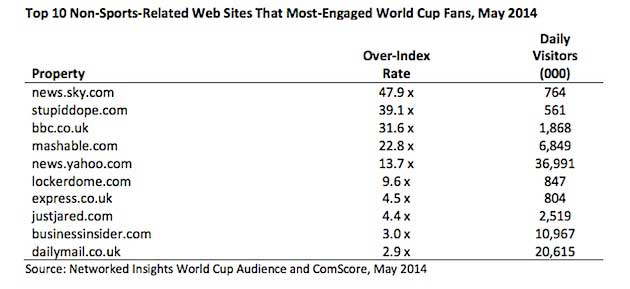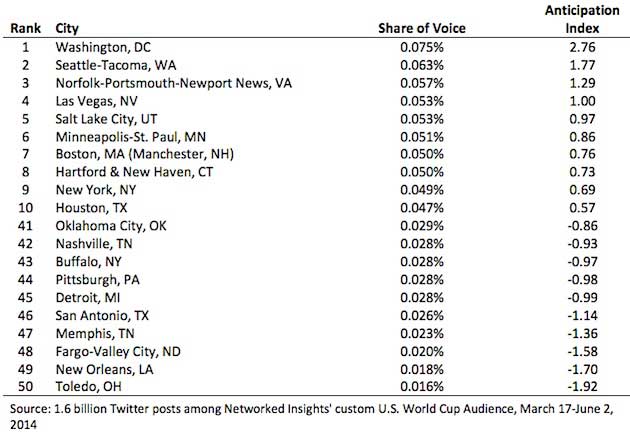Marketers seeking to reach the World Cup audience without paying for an expensive campaign have effective alternatives, according to a recent report from Networked Insights.
The company examined more than 5 billion tweets to find 575,000 active fans in the United States, then analyzed that audience to identify insights that could be of use to marketers looking to reach fans without spending directly on official sponsorships or soccer media.
Below, key findings from the report.
Overlapping Interests
World Cup fans over-index across various interests; that is, they are significantly more likely to engage with certain topics compared with the baseline US consumer:
- Not surprisingly, World Cup fans show strong interest in other sports, such as American football (4.2x over-index rate), tennis (3.5x), and hockey (1.8x); so advertisers looking for end-arounds to reach these consumers can do so via other sports properties.
- World Cup fans are also much more likely than average to be interested in documentary movies (3.3x) and to watch talk-format TV programs (2.1x)—some not-so-obvious ways to reach the same audience.

Alternative Media Options
Advertisers looking to reach the US World Cup audience via digital media outlets without going directly to sports publishers have various options:
- Fans tend to be heavy news consumers, engaging with a mix of British and US sources, as well as with lifestyle and celebrity content.
- Specifically, World Cup fans over-index in sharing non-sports content from news sites such as Sky News and Mashable, as well as lifestyle and entertainment publications such as Stupid Dope and Just Jared.

Local Opportunities
Marketers looking to invest in local campaigns should keep in mind that interest in the World Cup varies significantly by US metropolitan region:
- Washington DC topped the list of cities with greatest local interest in the World Cup ahead of the tournament, followed by Seattle, Norfolk, Las Vegas, and Salt Lake City.
- Toledo ranked at the bottom of the list.

About the research: The report was based on an analysis of 5 billion tweets from more than 575,000 active World Cup fans in the United States.




